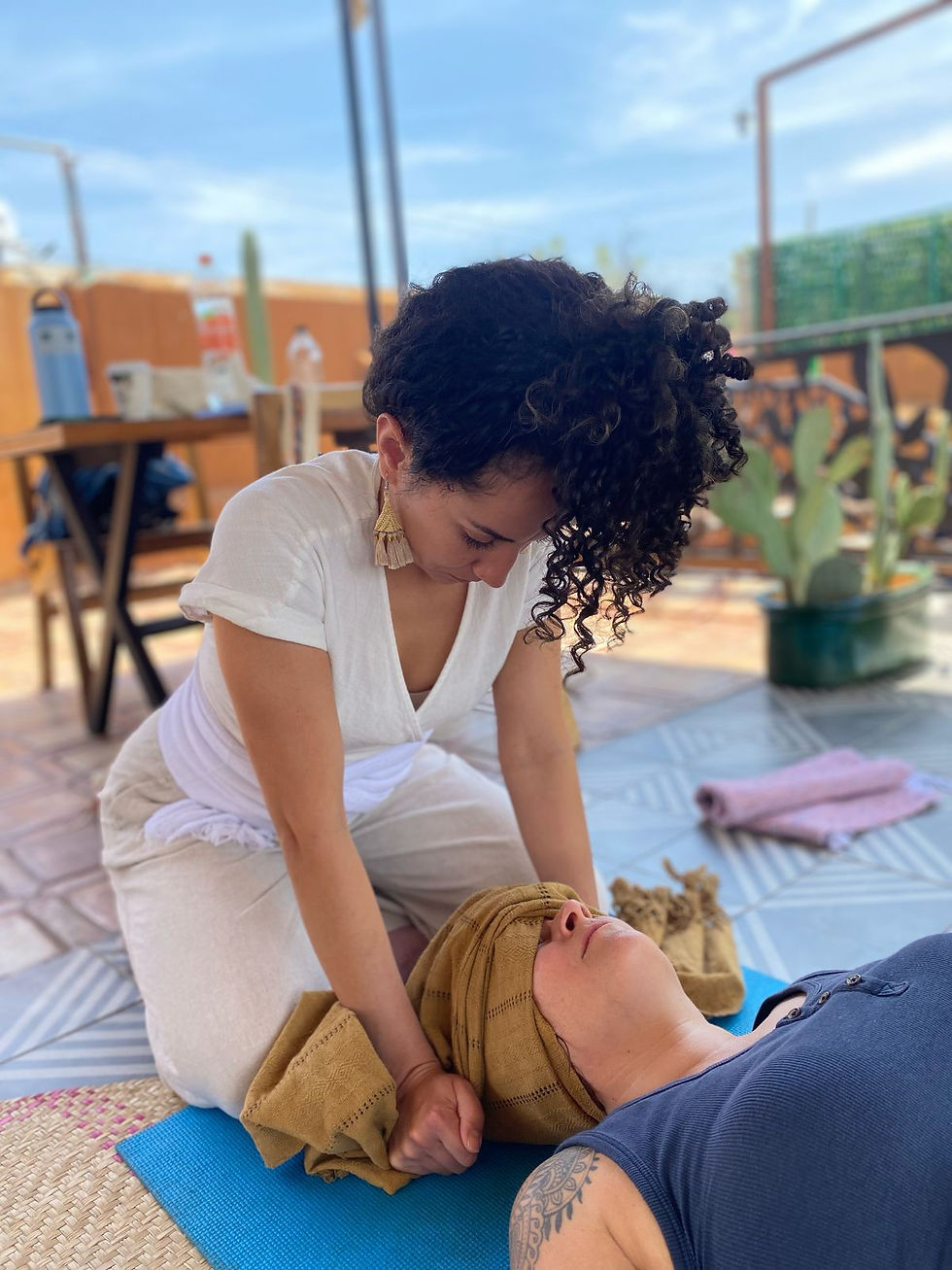Reflections on Doula Training in Mexico
- Becky Ofrane
- Jul 30
- 3 min read
Updated: Jul 31
In May, I celebrated the end of my first academic year by joining Wombs of the World on their doula training immersion in Mexico. It was a personal and professional journey, serving many purposes and combining many goals and parts of myself.
As a doula slowly returning to that work after a break, I surrounded myself with other doulas and midwives at different points in their own pathways; as a researcher, I explored new research observation methods on the trip; as a teacher, I made connections and discovered ways to help my students understand birth and health in Mexico; as a mother, I allowed myself to rejuvenate and enjoy the company and wisdom of other women; and as an amante de Mexico, I soaked up all the culture, history, and ritual that makes Mexico such a special place to me.

This was not a clinical immersion, but a cultural and spiritual journey into the traditional practices of indigenous midwives of Oaxaca and other areas. We learned the many ways they work with women in pregnancy, birth and postpartum - very holistically.
There were 8 of us, hosted by 2 amazing local facilitators, Mariela and Rosa Amarilla. We learned about and practiced with the rebozo, the long woven wrap that can serve many purposes, but is particularly useful as an extension of the hands in positioning baby and massaging the hips and other parts of the mother's body. We practiced la cerrada - the closing of the bones - a ritual that honors the physical and emotional healing of a woman after childbirth. We learned the importance of plant medicine, and the care and intention that goes into preparing baths, tonics, salves, teas and more to treat and nourish women. We experienced (twice!) a temazcal, the traditional Mesoamerican sweat-lodge ceremony for purification and healing. And so much more...


To be clear, not all women in Mexico have access to the kind of traditional care we were learning about. They have a complex health care system like in the U.S., where public assistance actually financially penalizes women who do not birth in public Mexican hospitals. But there are growing efforts to maintain and revive this traditional wisdom, which we've lost so much of in the U.S. But getting to meet and learn from the different generations of midwives and healers was such a great honor. I came away with such a broader understanding of women's health, and the efforts needed to maintain traditional wisdom.
I returned thinking deeply about a few things. How can I incorporate all this learning in a respectful and honorable way, as non-Mexicana? How can I support more women in later stages of life with the rebozo and la cerrada ceremonies (like as a closure of the childbearing years altogether)? How to I measure the value of this kind of immersive cultural exchange for birthwork and public health? And also a little wondering about how I can spend as much time in Mexico as possible!
I can't thank enough: Wombs of the World, our facilitators Mariela and Rosa Amarilla, and the wise Doña Queta, Norma, Venus, Yuu, and all the others that so generously gave their time and wisdom to teach us. I'm invigorated and excited to weave this knowledge and experience into all my work.




Comments